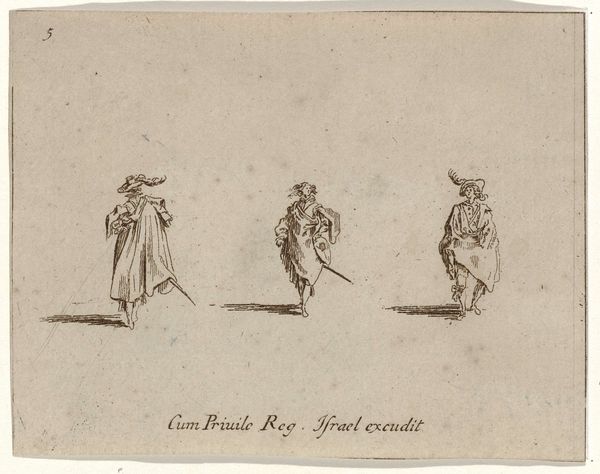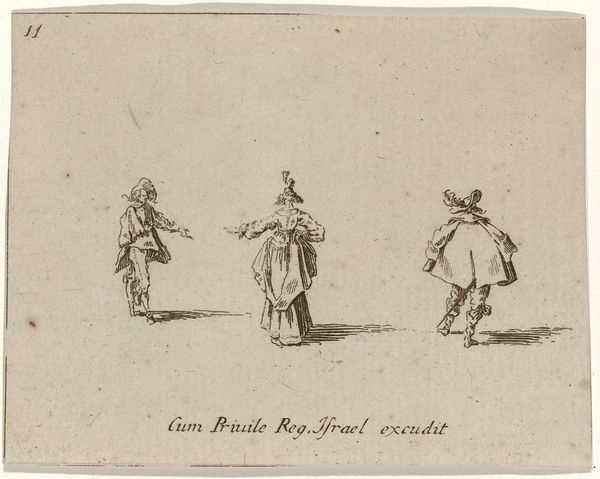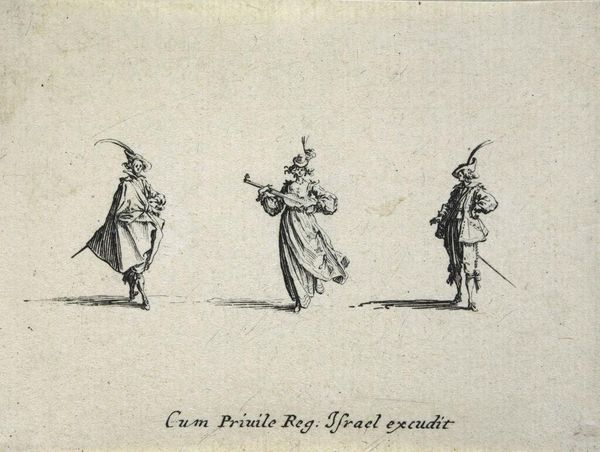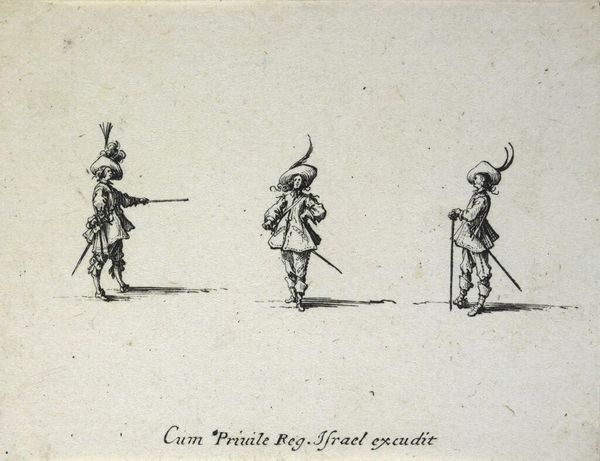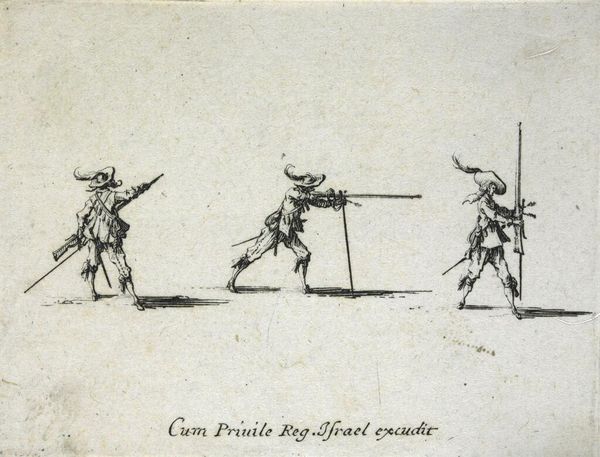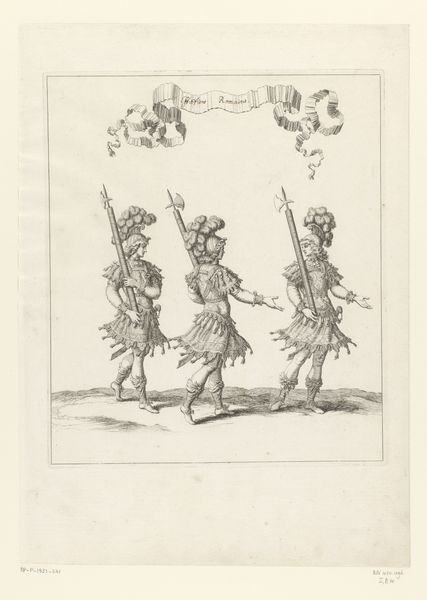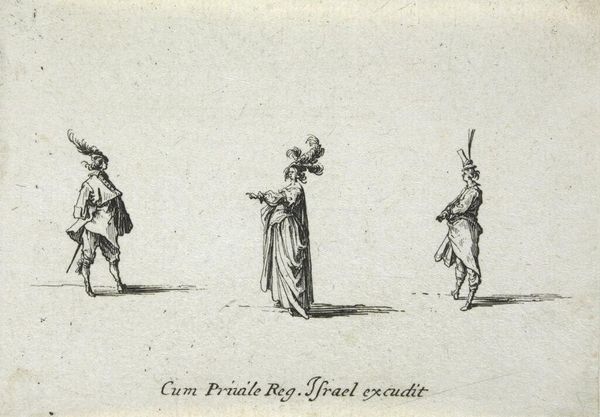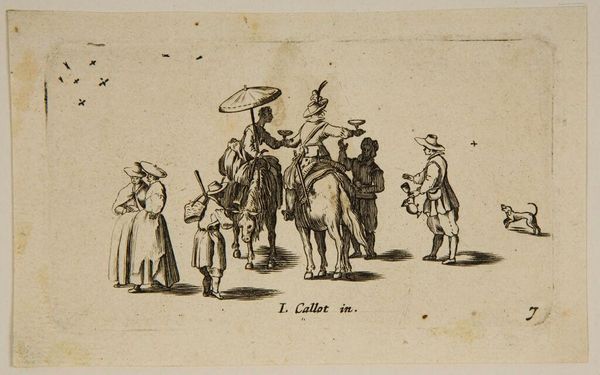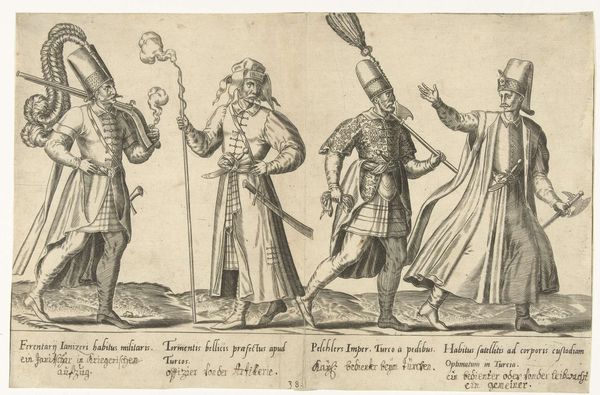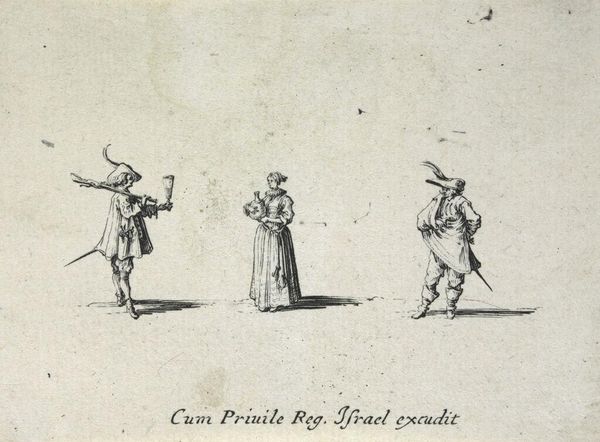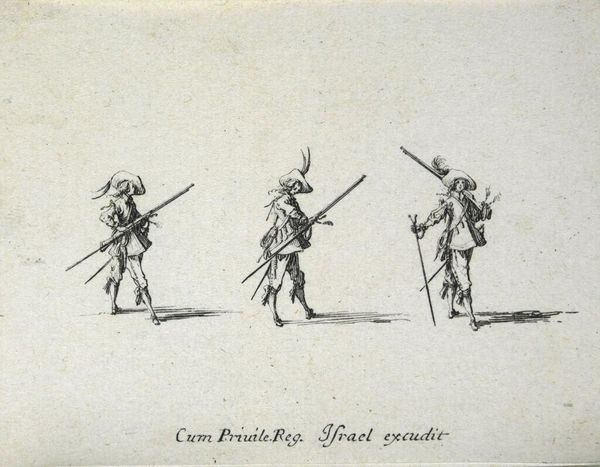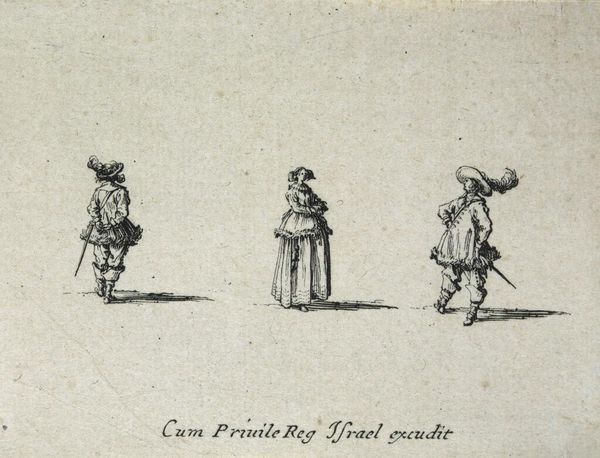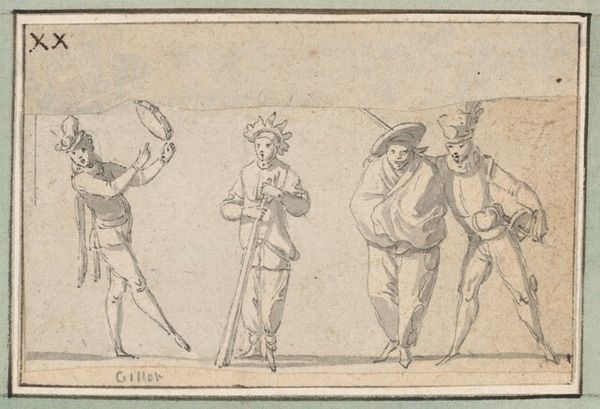
drawing, etching, ink, engraving
#
portrait
#
drawing
#
baroque
#
etching
#
figuration
#
ink
#
engraving
Dimensions: height 149 mm, width 97 mm
Copyright: Rijks Museum: Open Domain
Curator: Let's discuss Israel Henriet's "Drie Figuurtjes," created around 1635. It’s a fascinating etching and engraving piece. Editor: My immediate impression is one of rather stark elegance, despite the seemingly casual poses. The fineness of the lines against that almost blank background makes for a very austere statement, doesn’t it? Curator: Indeed. Considering Henriet's role as a printmaker linked to the French court during Louis XIII’s reign, we can see these figures as embodiments of a specific aristocratic identity, a performance of nobility in a period of immense social stratification and religious conflict. Editor: It's the repetition that intrigues me. The near symmetry in their clothing – the capes, the hats, even the hint of swagger – invites a semiotic reading. Is this a statement about the regimentation of courtly life, or a deconstruction of individuality within social strata? Curator: Perhaps both. We need to see this through the lens of Baroque portraiture. The figures, likely male courtiers, adopt performative stances meant to signal their status and proximity to power. How do they construct and project an image of authority, virtue, and masculinity? The feathers are an interesting touch. Editor: They’re almost comically large, aren’t they? Emphasizing the vertical and creating a slightly absurd visual tension. Their scale disrupts any sense of perfect proportion. Could that be a subversive visual commentary from Henriet? A subtle mocking of courtly excess? Curator: That's a compelling thought! Consider also the materiality. The use of etching allows for a remarkable delicacy, a subtle shading that suggests rather than dictates. In thinking of this artist and these people, can we unpack a bit of queer or marginalized identity at all? What of the power and courtly connections to their gender presentation? Editor: That leads to an interpretation informed by feminist theory: a subversion embedded within the form. By subtly exaggerating these codes of masculine display, the artist exposes them as constructed, almost theatrical, rather than inherent. Curator: Absolutely. Thinking of the historical moment also: as European power consolidated amid violence and political struggle, image and artistic control became critical, didn't it? Editor: Yes. I’m leaving with a feeling that these elegant figures harbor a good deal of unspoken tension beneath the surface. It makes me see portraiture differently. Curator: For me, the artwork really underscores the entanglement of identity, politics, and artistic expression, inviting reflection on historical power dynamics.
Comments
No comments
Be the first to comment and join the conversation on the ultimate creative platform.
